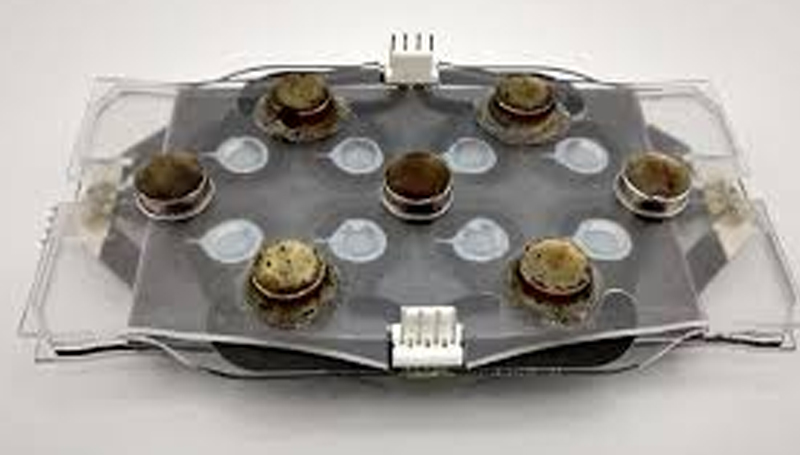Researchers at Binghamton University have developed a device that can rapidly detect certain types of antibiotic-resistant bacteria. The device uses paper as a substrate, and allows a user to rapidly test the effects of specific antibiotics on patient bacterial samples. It measures the effects of antibiotics on the electron transfer bacteria, providing a new way to measure antibiotic resistance.
Antibiotic resistance is a growing crisis, with nearly 3 million antibiotic-resistant infections occurring in the US annually and 35,000 related deaths. If the levels of antibiotic resistance continue to increase, routine surgeries could become difficult or impossible because of the risk of untreatable surgical site infections. One of the key ways we can delay this dystopian future is to use antibiotics wisely and rather than using broad-spectrum antibiotics to treat every infection, administer more targeted agents.
However, identifying the bacteria that are responsible for an infection, and their antibiotic susceptibility, can sometimes take a lot longer than is desirable, or safe. Growing bacterial cultures in a lab, and then testing individual antibiotics on that culture to determine susceptibility, can take days, at which point a patient could be seriously ill, or even dead.
“To effectively treat the infections, we need to select the right antibiotics with the exact dose for the appropriate duration,” said Seokheun Choi, a researcher involved in the study. “There’s a need to develop an antibiotic-susceptibility testing method and offer effective guidelines to treat these infections.”
These issues have inspired this latest device, which measures the effects of antibiotics on bacteria in as little as five hours. The device is intended to work with exoelectrogenic bacteria, that use a biochemical process called electron transfer for cell growth and information exchange with nearby microorganisms.
“We leverage this biochemical event for a new technique to assess the antibiotic effectiveness against bacteria without monitoring the whole bacterial growth,” said Choi. “As far as I know, we are the first to demonstrate this technique in a rapid and high-throughput manner by using paper as a substrate.”
The technology involves a clinician taking a sample for a patient, placing it within the device, and then exposing the bacteria in the device to a variety of antibiotics. The technology can then detect subtle changes in electron transfer that indicate antibiotic susceptibility.
“The hypothesis is that the antibiotic exposure could cause sufficient inhibition to the bacterial electron transfer, so the readout by the device would be sensitive enough to show small variations in the electrical output caused by changes in antibiotic effectiveness,” said Choi.
The Binghamton team is currently working to expand the technique so that bacteria that do not use electron transfer can also be assessed.












